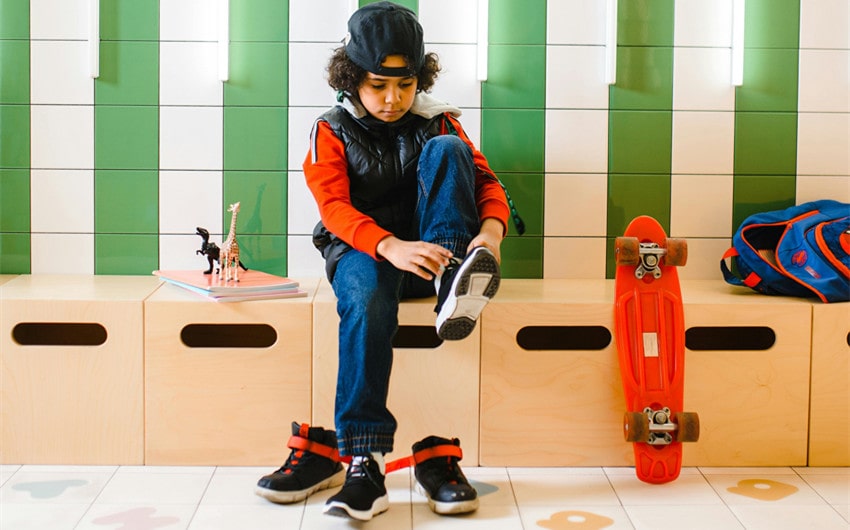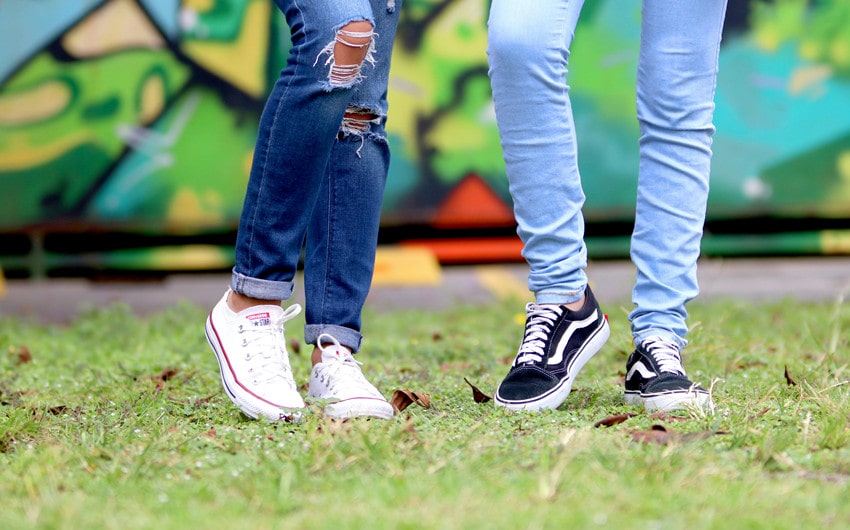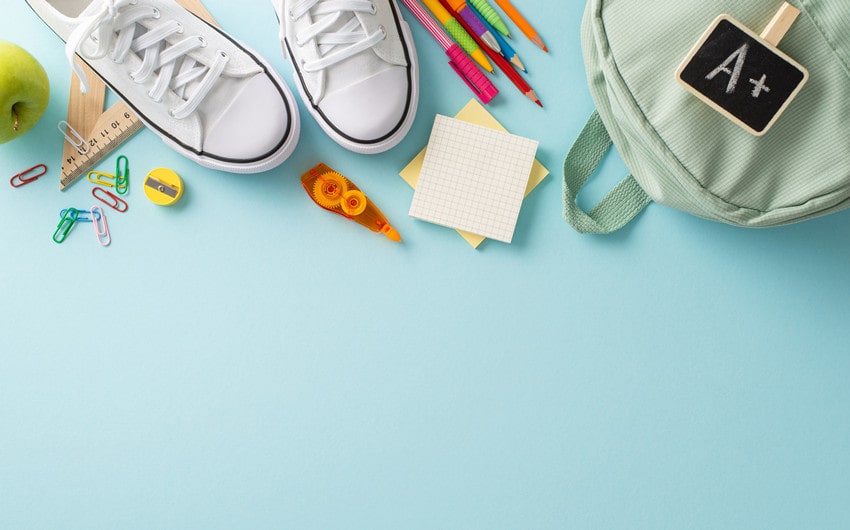What Does GS Mean in Shoes? Sizing Explained for Parents
When shopping for your child’s shoes, you’ve probably encountered various abbreviations that can be a bit confusing. One common question parents ask is, “What does GS mean in shoes?” Understanding this term is essential for choosing the right size and style as your child’s feet grow.
GS stands for “Grade School,” a sizing category specifically designed for older children. Knowing what this means can help you find shoes that not only fit well but also support your child’s active lifestyle. Let’s explore what GS means and why it’s important for your next shoe purchase.
What Does GS Mean in Shoes?
The term “GS” in shoes stands for “Grade School.” It’s a specific sizing category used by many footwear brands to indicate shoes designed for children who are in grade school, typically ranging from about 6 to 12 years old. Understanding what GS means is important for parents and guardians as it helps them select shoes that are appropriately sized and constructed for older children who have outgrown preschool (PS) sizes but are not yet ready for adult sizes.
GS shoes are designed to fit the growing feet of children in this age range. These sizes generally follow a similar numbering system to adult shoes but are specifically tailored to accommodate the unique needs of children. The sizing in GS typically starts where preschool sizes end, ensuring a smooth transition as your child’s feet grow.
For example, a GS size might be labeled as a 4Y or 5Y, with the “Y” standing for “Youth.” These sizes are structured to provide the necessary support and comfort for children who are becoming more active and engaging in more complex physical activities.
Why GS Sizing Is Important

Understanding and choosing the correct GS (Grade School) size for your child’s shoes is crucial for several reasons, all of which play a significant role in your child’s foot health, comfort, and overall well-being. GS sizing is specifically designed to meet the unique needs of older children who are in a critical stage of growth and development, making it an essential consideration for parents and guardians.
1. Proper Fit for Growing Feet
As children enter the grade school years, their feet are rapidly growing and changing. The GS sizing category is tailored to accommodate this growth, ensuring that shoes fit properly during this pivotal stage.
A proper fit is crucial because shoes that are too small can cause blisters, calluses, and discomfort, while shoes that are too large can lead to instability and an increased risk of tripping or falling. GS sizes are designed to provide the right balance of snugness and room for growth, allowing your child’s feet to develop naturally and comfortably.
2. Support for Increased Physical Activity
Children in the grade school age range are typically more active than they were in their preschool years. They may be participating in sports, playing outdoors more frequently, and engaging in other physical activities that require more support from their footwear.
GS shoes are specifically constructed to provide the necessary support for these activities, with features such as reinforced soles, cushioned insoles, and durable materials that can withstand the wear and tear of an active lifestyle. This support is essential for protecting growing feet from injuries, such as sprains or strains, that can occur during physical activity.
3. Promoting Healthy Foot Development
The grade school years are a critical period for foot development. During this time, the arches of the feet are still forming, and the bones are continuing to harden and grow. Wearing the right GS size helps ensure that your child’s feet are supported in all the right places, promoting healthy development.
Shoes that provide proper arch support, heel stability, and flexibility can help prevent common foot problems such as flat feet or overpronation. Additionally, GS shoes are often designed with ergonomics in mind, offering a fit that supports the natural alignment of the foot, which is important for overall posture and balance.
4. Encouraging Independence and Confidence
As children grow older, they begin to develop their own sense of style and preferences when it comes to clothing and footwear. GS shoes are designed not only for function but also for style, offering a wide range of options that appeal to children’s evolving tastes.
Allowing your child to choose shoes in the correct GS size that they find stylish and comfortable can boost their confidence and encourage independence. When children are comfortable in their shoes, they are more likely to participate actively in physical activities, social interactions, and other aspects of daily life, all of which contribute to their overall growth and development.
GS Shoe Size Guide
| GS Shoe Size | Foot Length (inches) | Foot Length (cm) | US Equivalent (Youth/Big Kid) |
| 3.5Y | 8.75 inches | 22.2 cm | Youth 3.5 / Big Kid 3.5 |
| 4Y | 8.9 inches | 22.5 cm | Youth 4 / Big Kid 4 |
| 4.5Y | 9.1 inches | 23.0 cm | Youth 4.5 / Big Kid 4.5 |
| 5Y | 9.25 inches | 23.5 cm | Youth 5 / Big Kid 5 |
| 5.5Y | 9.4 inches | 23.8 cm | Youth 5.5 / Big Kid 5.5 |
| 6Y | 9.5 inches | 24.1 cm | Youth 6 / Big Kid 6 |
| 6.5Y | 9.7 inches | 24.6 cm | Youth 6.5 / Big Kid 6.5 |
| 7Y | 9.8 inches | 25.0 cm | Youth 7 / Big Kid 7 |
Tips for Choosing the Right GS Size

Selecting the correct GS (Grade School) size for your child’s shoes is essential to ensure comfort, support, and proper foot development. As children grow, their shoe needs change, and choosing the right size becomes more critical. Here are some detailed tips to help you choose the right GS size for your child:
1. Measure Your Child’s Feet Regularly
Children’s feet grow rapidly, especially during the grade school years, so it’s important to measure their feet regularly—every few months is ideal. To do this, have your child stand on a flat surface, and use a measuring tape or ruler to measure the length from the heel to the tip of the longest toe.
Make sure to measure both feet, as one foot is often slightly larger than the other. Use the larger foot’s measurement to determine the correct shoe size. Many stores and brands offer printable foot measuring tools or in-store measuring services to help you get the most accurate measurement.
2. Account for Growing Room
When selecting GS shoes, it’s essential to allow some growing room, but not too much. A good rule of thumb is to leave about a thumb’s width (approximately half an inch) of space between the longest toe and the front of the shoe. This provides enough room for growth without compromising the fit and stability of the shoe.
Shoes that are too tight can cause discomfort and foot problems, while shoes that are too loose can lead to instability, making it harder for your child to walk or run comfortably.
3. Consider the Shoe’s Width
In addition to length, it’s important to consider the width of your child’s feet. Some children may have wider or narrower feet, which can affect how a shoe fits. When trying on GS shoes, pay attention to how they fit across the widest part of the foot. The shoe should be snug but not tight, with no pinching or squeezing.
Many brands offer shoes in various widths, so if your child has particularly wide or narrow feet, look for shoes that cater to these needs. A properly fitting shoe will ensure comfort and reduce the risk of blisters or other foot issues.
4. Understand Brand Variations in Sizing
Shoe sizes can vary slightly between brands, so a GS size 5 in one brand might fit differently than a GS size 5 in another. To ensure the best fit, check the specific size chart for the brand you’re purchasing. Most brands provide detailed size guides that include both length and width measurements.
If you’re shopping online, read customer reviews to see if the shoes tend to run large, small, or true to size. When possible, try on shoes in-store, or if buying online, choose a retailer with a good return policy so you can exchange sizes if necessary.
5. Try Shoes on with Socks
Always have your child try on shoes with the type of socks they will typically wear with them. Socks can add a bit of bulk, and trying on shoes without them might result in a size that feels too tight once socks are worn.
If your child will be wearing thicker socks during colder months, consider this when selecting the size. Make sure the shoes feel comfortable with the socks on, without being too tight or too loose.
6. Test the Fit with a Walk
Once your child has the shoes on, have them walk around to test the fit. Pay attention to how the shoes feel and how they move. The heel should stay securely in place without slipping, and the shoes should flex naturally with the foot as your child walks.
There should be no pinching at the toes, and the shoes should not cause any discomfort. If your child complains of any tightness, rubbing, or pain, it’s a sign that the shoes might not be the right size or fit. It’s important to listen to your child’s feedback and adjust the size or style as needed.
Common Questions About GS Shoes (FAQ)
1. How does GS sizing compare to adult sizes?
- GS (Grade School) sizes are typically equivalent to smaller adult sizes but are specifically designed for the proportions of a child’s foot. For example, a GS size 7 is roughly equivalent to a men’s size 7 or a women’s size 8. However, GS shoes are crafted with children’s feet in mind, often featuring more support and durability in areas that are important for growing feet, such as the arch and heel. Additionally, GS shoes may have a slightly narrower fit compared to adult shoes, making them better suited to the typically slimmer feet of children.
2. Can adults wear GS shoes?
- Yes, adults with smaller feet can wear GS shoes, and many do, especially women. Since GS sizes often align with smaller adult sizes (typically up to women’s size 8 or men’s size 7), they can be a great option for adults looking for shoes at a lower price point. GS shoes are usually less expensive than their adult counterparts, even for similar models, making them a budget-friendly choice. However, adults should keep in mind that GS shoes are designed for the foot structure of children, which may result in a slightly different fit and feel compared to shoes made specifically for adults.
3. How do I know when to transition my child from GS to adult sizes?
- The transition from GS to adult sizes typically happens when your child’s foot size exceeds the GS range, usually around size 7 or 7.5Y. You’ll know it’s time to move to adult sizes when your child starts to outgrow the largest GS sizes, or if their feet begin to require a wider fit that is more common in adult shoes. Additionally, if your child is becoming more fashion-conscious, they may express a preference for adult styles. When transitioning, it’s important to reassess the fit to ensure that the adult shoes provide the same level of support and comfort as their GS shoes did.
4. Are GS shoes suitable for all activities?
- GS shoes are versatile and generally suitable for a wide range of activities, including casual wear, school, and light sports. However, if your child is involved in specific sports or activities that require specialized footwear, such as basketball, running, or soccer, it may be worth investing in sport-specific shoes designed for those purposes. While GS shoes are durable and supportive, sport-specific shoes offer additional features tailored to the demands of those activities, such as enhanced traction, specialized cushioning, and reinforced support in key areas.
5. How can I extend the life of GS shoes?
- To extend the life of GS shoes, proper care and maintenance are essential. Encourage your child to wear their shoes only for the intended purpose—for example, school or casual outings—and not for rough play or activities that could cause excessive wear and tear. Regularly clean the shoes according to the manufacturer’s instructions to prevent dirt and grime from breaking down the materials. It’s also a good idea to rotate between multiple pairs of shoes, allowing each pair time to air out and recover between wears. Additionally, storing shoes in a cool, dry place when not in use can prevent damage and prolong their lifespan.







